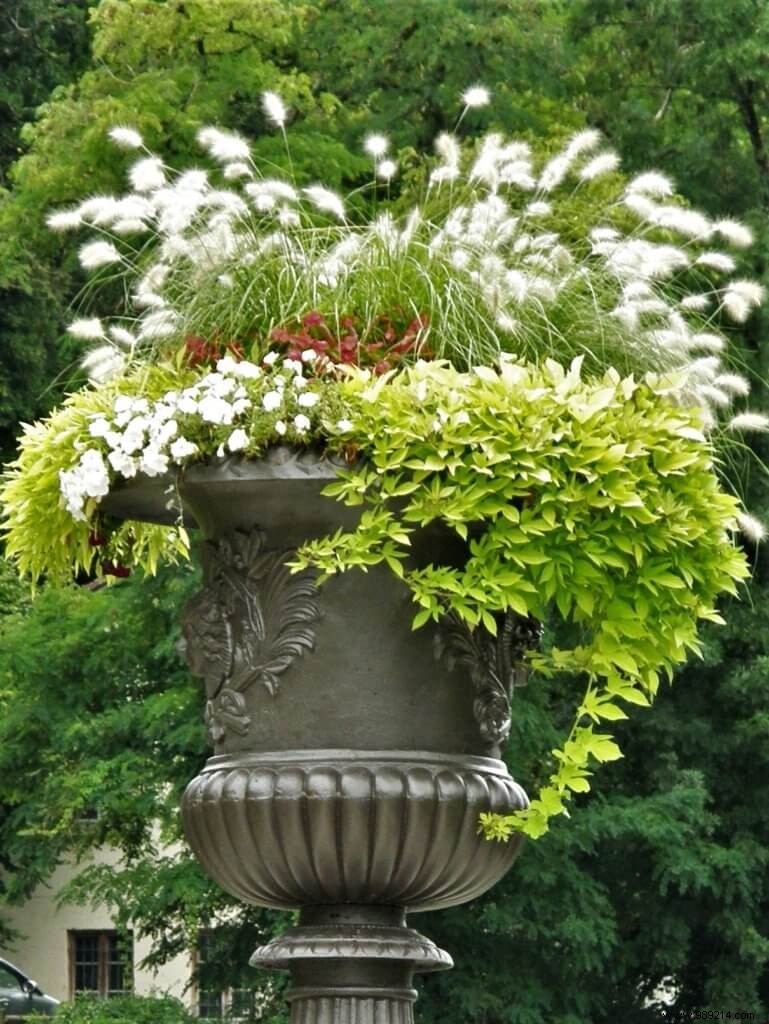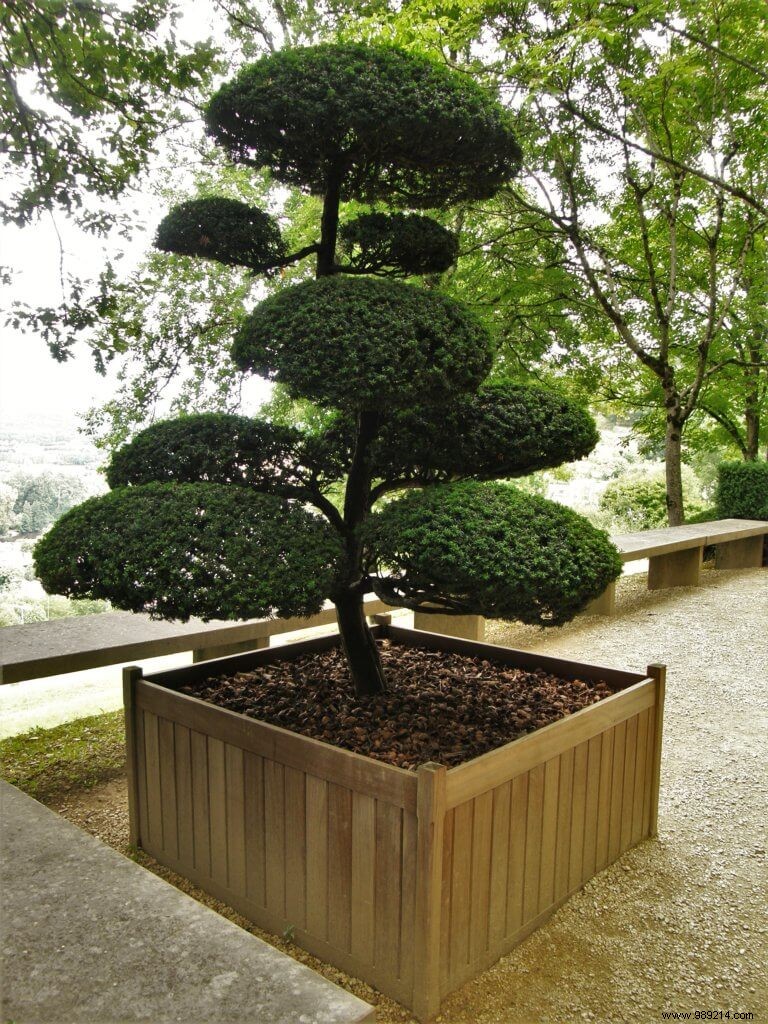Many of you ask me questions about planting in planters or pots. Which container to choose? What potting soil to use? How many clay pebbles should I put in the bottom?
Obviously, pot gardens, on balconies or terraces still exist and that's good.
Here is a summary of what is best to do.

Planting in a Medici vase
It all depends on the plants you want. Bedding plants, annuals, such as lobelia, petunia, carnation and marigold, surfinia, diascia, begonia, bidens, cleome, celosia… and condiments, parsley, chives, thyme, mint… are content with traditional window boxes , but does not exempt you from fertilizing your plants regularly.
Question economy, I choose the recovery! Graveyards are full of terracotta pots of the correct diameter for all bedding plants and condiments! These are the chrysanthemum pots that are no longer used and fill the garbage cans. Even cracked they are still useful, just put two together and you're done!
Large-growing shrubs and perennials require more soil volume. Rooting is such that you need containers 40 to 70 cm deep and as wide.
It is completely, absolutely and irretrievably obligatory! Containers should be sold with gravel for drainage! You opt for pozzolan, clay balls, broken pots or the gravel of your course, the fact remains that without this drainage, the evacuation of water is bad and the aeration at the root level n It's only a distant memory...of the time when the little plant was pampered at its nursery!
Root suffocation won't pass me by, I opt for a gravel bed at the bottom of the pot! The amount ? Between 2 and 15 cm thick depending on the height of the pot, you still have to leave room for the soil.
Generic term for growing medium, or substrate, also called potting soil, the soil must be chosen according to the plants that will have their roots there. Unless you want to make your own soil, you will take a ready-to-use soil. So you need to know for which plants.
You forget the "horticultural compost" sold for 3 cents per cubic meter! These are savings that are expensive in terms of the quantity of plants to be replaced during the season. Hey, I made some friends on this cost! (admirable pun, yes!)
In summary, you have heather soil plants such as azalea, rhododendron, fern... take a potting soil of the same name. If it is a lemon tree, you choose a citrus soil. Do the same with orchids, cacti, geraniums, flowering plants...
Take your pick from the high or mid-range. You can read more about choosing potting soil here
The new planters have registered their volume, what a great idea! Otherwise, for those who skipped math class, a little reminder.
You do the following operation:width x length x height, taking the meter as the unit. Example for a planter 20 cm wide, 70 long and 15 high:0.20 x 0.70 x 0.15 =0.021 cubic meter. 1 cubic meter being equal to 1000 liters, your planter is 21 liters. (I'll spare you the compaction coefficient after expansion!)
Case of a round pot:base surface X height. Example for a pot 40 cm in diameter by 50 cm high:
Π x r² x h =3.14 x 0.20 x 0.2 x 0.50 =0.063 or 63 liters
We can also take the cm as a unit and divide the total by 1000, it's up to you.
You cannot escape it. The goal of fertilization is to have pretty healthy plants, which are therefore properly nourished. Take an organic fertilization (fertilizer), and leave the chemical fertilizer at the merchant at 3 cents per cubic meter; compost fertilizer, same observation.
Nevertheless, it is a good idea to read the labels and respect the doses and frequencies mentioned.
here you will find the fertilization tests I performed

topiary in tray
"How do I water my plant? »
No, but I'm asking you how many glasses of water are you going to drink this summer? Do you stay in the shade on the couch or are you a fan of jogging on the beach in the middle of the afternoon so that you can be seen? Well for plants it's the same. There are so many parameters to take into account that the indication will only be approximate. Between the temperature, the wind, the stage of the plant, its size, its variety and the age of the watering can, it is best to observe and water before the plant calls for it. Not easy, I grant you. But with a little practice and observation, we manage.
If you have 100 € to spend, choose a plant at 50 €, the rest is for the pot, the soil, the clay ball and the fertilization. And you, what kind of flowers do you put in your pots?